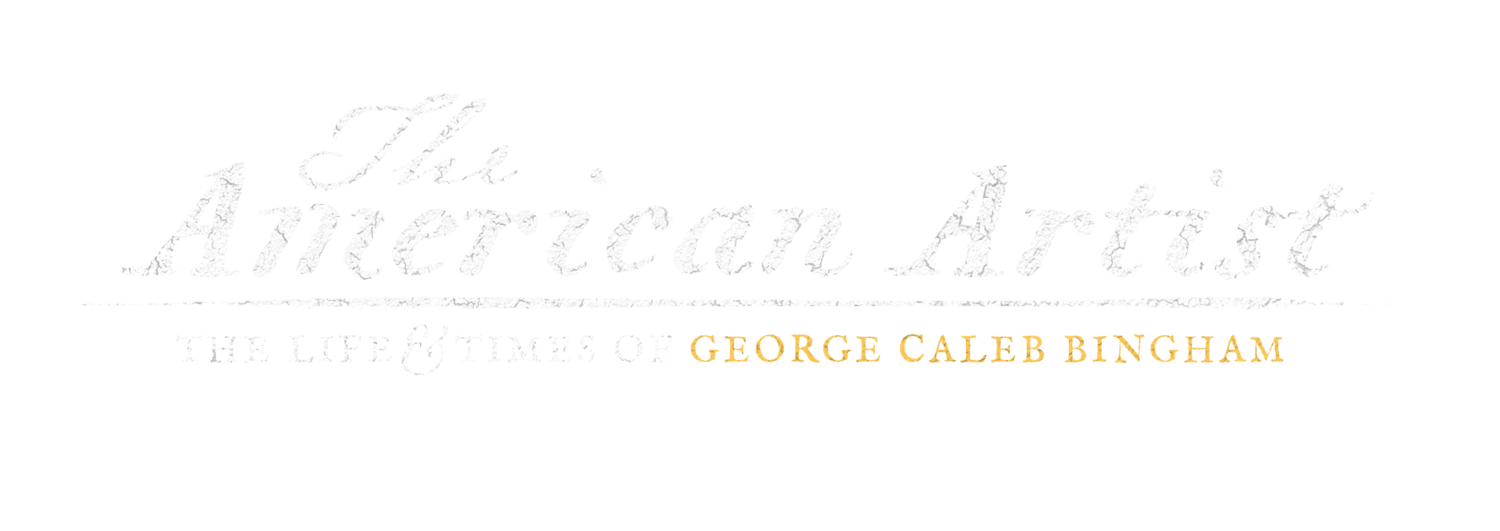Every artist walks a line between their need to understand and their need to be understood.
Striving to understand the world feeds the artist’s work; the need for the work to be understood by the world feeds the artist’s soul.
As we show in our documentary, The American Artist: The Life & Times of George Caleb Bingham, when people misunderstand or misinterpret a work of art, the controversy can outlast a lifetime.
Perhaps no other nineteenth century American painting has been at the root of controversy more than Bingham’s General Order No. 11.
INSPIRATION FOR THE PAINTING
In April 1863, following a string of bloody raids waged by anti-slavery Jayhawkers from Kansas and pro-slavery Bushwackers from Missouri, Union General Thomas Ewing ordered anyone suspected of giving aid to the pro-slavery Bushwhackers to be placed under arrest. This included women and children, some of whom were guilty only of being related to a Bushwhacker, who had simply went home to get a meal or a good night’s sleep.
Soon after issuing the order, General Ewing commandeered Bingham’s vacant home in Kansas City for use as a jail to house a group of women under arrest for suspicion aiding the Bushwackers… many of these women were their wives, sisters and mothers. Under circumstances that remain unclear, the ad hoc prison suffered a catastrophic structural collapse, killing several of the internees and maiming many more.
A few days later the Bushwhackers, riding under the infamous William Quantrill, rode into Lawrence, Kansas, killing almost 200 men and boys and setting fire to much of the town.
In response to “The Lawrence Massacre” General Ewing issued General Order Number 11. Order Number 11 called for the forced evacuation of the citizens of four western Missouri counties without regard to allegiance or affiliation. It also ordered their property destroyed to deprive the Bushwhackers of supplies and shelter.
It was the horror of this forced migration and wanton destruction that Bingham sought to capture in his painting General Order No. 11. Also called, Martial Law, it would haunt his reputation long after he was gone.
THE PAINTING
General Order No. 11 (George Caleb Bingham/Cincinnati Art Museum/The Edwin and Virginia Irwin Memorial/The Bridgeman Art Library International)
In reacting to the individual tragedy as well as the larger tragedy of the war, Bingham created a mural dramatizing the horrors of the war, horrors that were personal, cultural and political.
His painting General Order No. 11 is a visual parable with Biblical allegories that attempts to speak for the all the parties swept up in the horror of the civil war fought along the Kansas/Missouri border: the brutalities inflicted by Kansas Jayhawkers, distinguished by their red-leggings, as well as the women and children destined to become collateral damage.
And, perhaps most forward thinking for the times, it also portrays the African-American slaves as active participants in the story of the war and walking away from the scene into an unsure future.
SEEING WHAT WE WANT TO SEE
Ironically, in using this sweeping point of view to capture the scope of the tragedy and the war itself, Bingham inadvertently opened the door for a range of interpretations he may not have intended.
Joan Stack, curator of art collections at the State Historical Society of Missouri, and a featured expert in our documentary, wrote about the controversies surrounding the painting in an article for the Missouri Historical Review.
Stack outlines no fewer than three divergent interpretations of the painting.
Southern apologists looked to its depiction of Federal excess as implicitly pro-Confederate, while Union sympathizers dismissed the work as propaganda.
Reconciliationists, who in the spirit of Reconstruction stressed common valor and shared blame for the war, viewed the painting as promoting “reunion through the admission of equivalent blame for the war’s atrocities both Unionists and rebels.”
The third group, Emancipationists, stressed how Bingham’s inclusion of slaves in the painting, underlined the real causes of the war and made explicit connection between the Biblical Adam, and slavery as America’s ‘original sin.’”
As for the artist himself, Bingham defended his painting and his reputation as anti-slavery and pro-union, but maintained his pride as a Virginia-born southerner who came of age as both a man and an artist in pre-Civil War Missouri.
The story of his General Order No. 11 is just one of many that make Bingham’s life and work so compelling more than a century and half later.
For more information about the upcoming documentary film, The American Artist: The Life and Times of George Caleb Bingham, including release dates and screening in 2016, please join our mail list.

